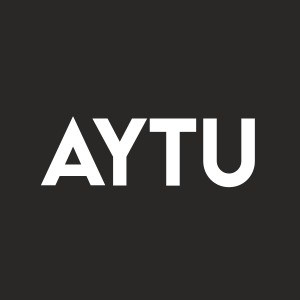Aytu BioPharma Announces Publication of In Vitro Study Demonstrating That Ultraviolet-A Light Increases Mitochondrial Anti-Viral Signaling Protein Within Cells
Rhea-AI Summary
Aytu BioPharma (AYTU) announced the publication of a study demonstrating that ultraviolet (UV) A light can enhance the expression of mitochondrial antiviral-signaling (MAVS) protein in cells. The manuscript, published in BioRxiv, suggests that UVA light elicits an antiviral effect through cell-to-cell communication, potentially offering therapeutic benefits against SARS-CoV-2 without requiring direct exposure to the light. The study highlights increased MAVS levels in human tracheal epithelial cells exposed to narrow band UVA, with significant results indicating a promising avenue for antiviral therapies.
Positive
- Published study confirms the potential of Healight UVA technology for antiviral effects.
- Demonstrated significant increase in MAVS levels in UVA-exposed cells, suggesting a novel antiviral mechanism.
- Potential therapeutic applications against SARS-CoV-2 indicated by in vitro findings.
Negative
- The study did not test the actual Healight device for COVID-19 treatment, limiting immediate applicability.
News Market Reaction 1 Alert
On the day this news was published, AYTU declined 2.30%, reflecting a moderate negative market reaction.
Data tracked by StockTitan Argus on the day of publication.
ENGLEWOOD, CO / ACCESSWIRE / May 12, 2021 / Aytu BioPharma, Inc. (NASDAQ:AYTU), a specialty pharmaceutical company focused on commercializing novel therapeutics and consumer healthcare products, announced today that in vitro data related to the ultraviolet (UV) A light used in the Healight™ UVA endotracheal catheter technology was published in BioRxiv, an online archive for health science manuscripts that are not yet peer reviewed.
The manuscript titled "Ultraviolet-A light increases mitochondrial anti-viral signaling protein via cell-cell communication" concluded that UVA light increases the expression of mitochondrial antiviral-signaling (MAVS) protein within cells, and the results suggest that this transmission of an increase in intracellular MAVS involves cell-to-cell communication. These findings confirm that an increase of MAVS in response to UVA light can be transmitted from cells directly exposed to UVA light to neighboring cells that have not been directly exposed to UVA light and suggest that cell-to-cell signaling is involved in the process of eliciting UVA light's antiviral effect.
"These latest findings continue to build upon the potential of the UVA light platform technology and may reveal the fundamental basis for the therapeutic effect of the specific UVA light used in the Healight endotracheal catheter . These findings point to the fact that direct exposure of cells to UVA light may not be required to elicit an antiviral effect against a pathogen like SARS-CoV-2 because the mitochondrial activation results in a wide-ranging cell-to-cell response which could result in an increased antiviral effect, "commented Josh Disbrow, chief executive officer of Aytu BioPharma.
In the study, MAVS levels were compared in primary human tracheal epithelial cells (HTEpC) exposed to narrow band (NB)-UVA light for 20 minutes and in unexposed controls, at 30
Normalized MAVS levels, as detected by western blot, were increased in NB-UVA exposed cells when compared to unexposed controls (P=0.0193). There were no changes in normalized MAVS levels, when naïve 30
Experiment | Description | P value |
1A | 30 | P<.01 |
1B | P<.001 | |
1C | NB-UVA Exposed Cell Monolayer Plate Section 1 v. NB-UVA Unexposed Monolayer Plate Section 4 | P<.05 |
2 | Supernatants from NB-UVA Exposed Cells v. Unexposed Controls | NS |
3 | Cell Lysates from NB-UVA Exposed Cells v. Unexposed Controls | NS |
About MAVS
Mitochondrial antiviral-signaling protein (MAVS) is a protein that is essential for antiviral innate immunity. MAVS is located in the outer membrane of the mitochondria, peroxisomes, and endoplasmic reticulum (ER). Upon viral infection, a group of cytosolic proteins will detect the presence of the virus and bind to MAVS, thereby activating MAVS. The activation of MAVS leads the virally infected cell to secrete cytokines. This induces an immune response which kills the host's virally infected cells, resulting in clearance of the virus.
To access the BioRxiv pre-print, click here:
https://www.biorxiv.org/content/10.1101/2021.05.11.443549v1
About Aytu BioPharma, Inc.
Aytu BioPharma is a specialty pharmaceutical company with a growing commercial portfolio of prescription therapeutics and consumer health products. The company's primary prescription products treat attention deficit hyperactivity disorder (ADHD) and other common pediatric conditions. Aytu markets ADHD products Adzenys XR-ODT® (amphetamine) extended-release orally disintegrating tablets (see Full Prescribing Information, including Boxed WARNING), Cotempla XR-ODT® (methylphenidate) extended-release orally disintegrating tablets (see Full Prescribing Information, including Boxed WARNING), and Adzenys-ER® (amphetamine) extended-release oral suspension (see Full Prescribing Information, including Boxed WARNING). The company's other pediatric products include Karbinal® ER (carbinoxamine maleate), an extended-release carbinoxamine (antihistamine) suspension indicated to treat numerous allergic conditions, and Poly-Vi-Flor® and Tri-Vi-Flor®, two complementary fluoride-based prescription vitamin product lines containing combinations of fluoride and vitamins in various formulations for infants and children with fluoride deficiency. The company's evolution has been driven by strategic in-licensing, acquisition-based transactions and organic product growth. Aytu is building a complimentary therapeutic development pipeline including a prospective treatment (AR101/enzastaurin) for vascular Ehlers-Danlos Syndrome (vEDS), a rare genetic disease resulting in high morbidity and a significantly shortened lifespan. There are no currently approved treatments for vEDS. To learn more, please visit aytubio.com.
Forward-Looking Statements
This press release includes forward-looking statements within the meaning of Section 27A of the Securities Act of 1933, as amended, and Section 21E of the Securities Exchange Act of 1934, or the Exchange Act. All statements other than statements of historical facts contained in this press release, are forward-looking statements. Forward-looking statements are generally written in the future tense and/or are preceded by words such as ''may,'' ''will,'' ''should,'' ''forecast,'' ''could,'' ''expect,'' ''suggest,'' ''believe,'' ''estimate,'' ''continue,'' ''anticipate,'' ''intend,'' ''plan,'' or similar words, or the negatives of such terms or other variations on such terms or comparable terminology. All statements other than statements of historical facts contained in this presentation, are forward-looking statements, including but not limited to any statements regarding the scientific or clinical results from the Healight studies, the potential regulatory authorizations or approvals that may be enabled by such studies, the market potential of Healight, and any factors that could influence any future commercialization plans for Healight t We also refer you to (i) the risks described in ''Risk Factors'' in Part I, Item 1A of Aytu's Annual Report on Form 10-K and in the other reports and documents it files with the Securities and Exchange Commission and (ii) the Risk Factors set forth in Aytu's Annual Report on Form 10-K and Quarterly Reports on Form 10-Q filed with the SEC.
Contact for Media and Investors:
Sarah McCabe
Stern Investor Relations, Inc.
sarah.mccabe@sternir.com
SOURCE: Aytu BioPharma, Inc.
View source version on accesswire.com:
https://www.accesswire.com/646801/Aytu-BioPharma-Announces-Publication-of-In-Vitro-Study-Demonstrating-That-Ultraviolet-A-Light-Increases-Mitochondrial-Anti-Viral-Signaling-Protein-Within-Cells






